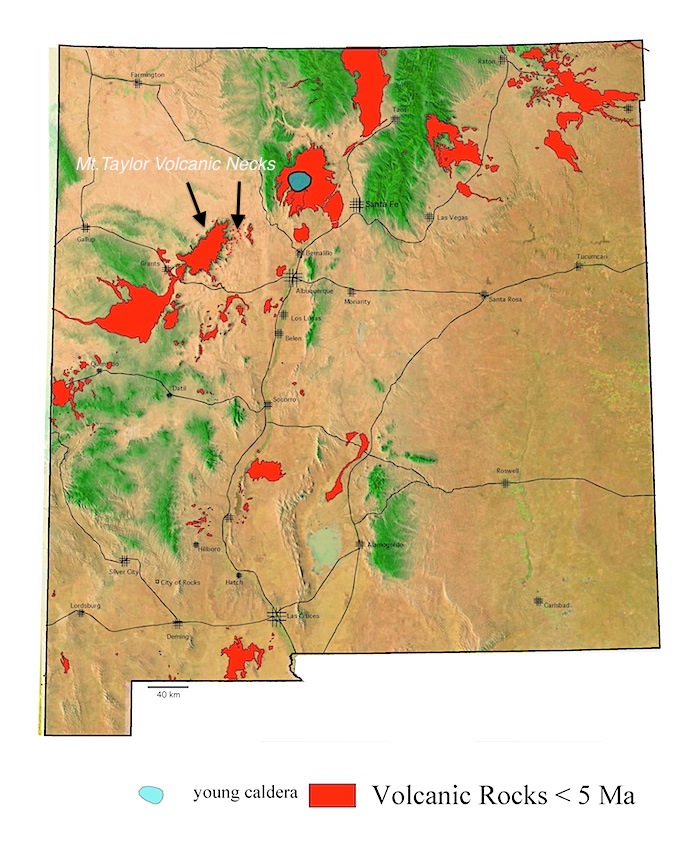
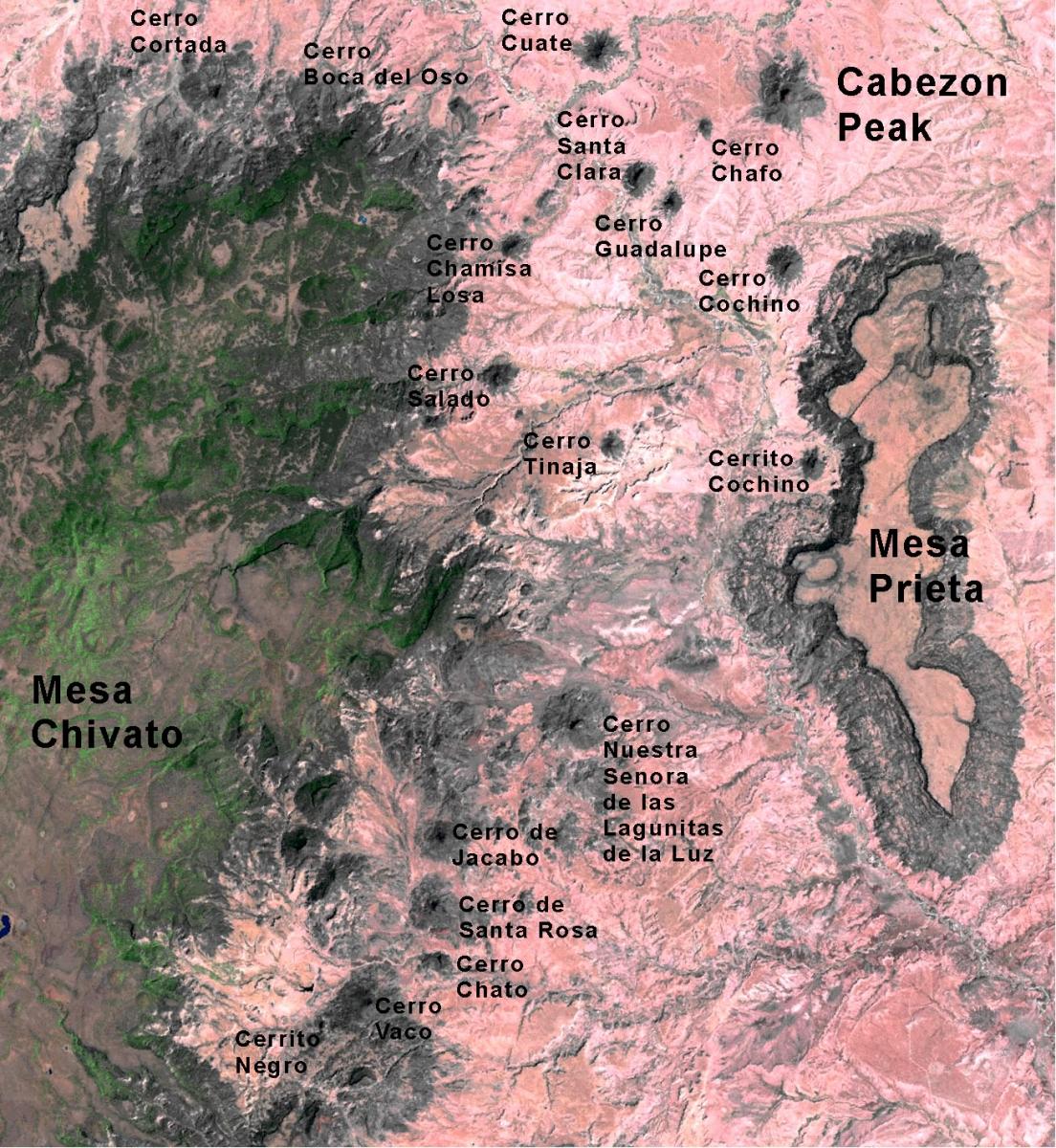
The Rio Puerco volcanic necks, including the regionally visible Cabezon Peak, are all part of the Mount Taylor volcanic field. Each neck is a small volcano that erupted during the time that the field was active. The vents are close in age to the volcanoes on the surface of Mesa Chivato, which is part of the same volcanic field. The volcanic vents on Mesa Chivato to the west and Mesa Prieta to the east are also examples of the probable orignal surface expression of the volcanoes now exposed as the Puerco volcanic necks. This means that the Rio Puerco volcanic necks are essentially a look inside the upper few hundred meters of typical small volcanoes. LIke vents on Mesa Chivato, the volcanoes that were eroded to expose the volcanic necks probably included fissures, cinder conens, and maars. Above: Landsat image and names of some of the volcanic necks.
Geological Overview
Cabezon Peak is one of many massive dark peaks known as volcanic necks that are scattered throughout the Rio Puerco valley between Mesa Chivato and Mesa Prieta on the west and east, and San Luis and I-40 on the north and south. Together with Mesas Chivato and Prieta they are part of the Mount Taylor volcanic field, a cluster of several hundred small volcanoes. A few volcanic necks, including Cerro Alesna, occur on the west side of Mesa Chivato. Other examples around the south margin of the Mount Taylor field include half-sectioned volcanoes (east Grants Ridge) and deeply dissected volcanoes (Cubero volcano).
There are only a few places where the interiors of young volcanoes are so well exposed as they are in the Rio Puerco valley. The volcanic nnecks are the near-surface interiors of small volcanoes that are geologically young, yet were deeply dissected when the Rio Puerco cut a valley through the Mount Taylor volcanic field. Backwasting of the lava flows and erosion of the volcanoes themselves has exposed the complex interiors of many of the small volcanoes. One may see results of violent events recorded in their complex structure. The eruptions were similar to those that form small scoria cones, such as Capulin or Bandera volcanoes, and in some cases, similar to eruptions that formed Zuni Salt lake or Kilbourne Hole.
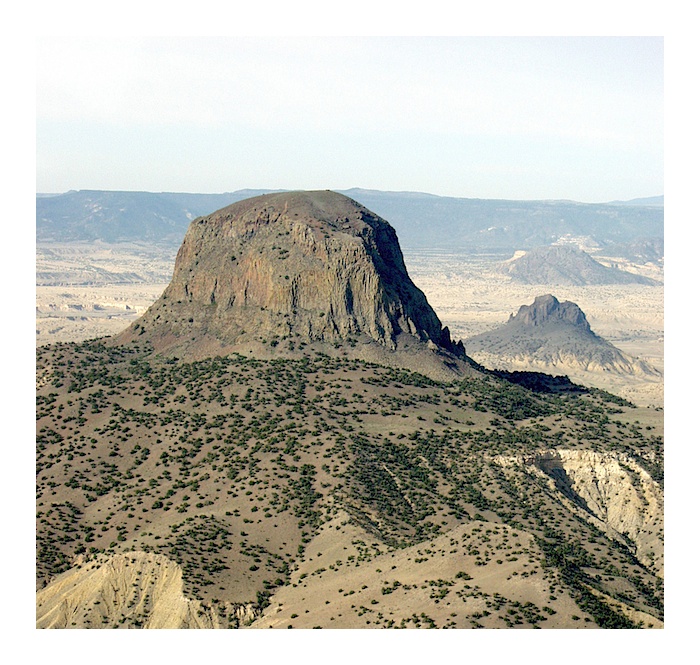
Cabezon Peak. Behind on the right is Cerro Guadalupe, one of the volcanic necks that appears in the USPS New Mexico State Centennial stamp. Beyond in the skyline is the north end of Mesa Chivato, the preserved surface of the Mount Taylor volcanic field. Photo Jayne Aubele
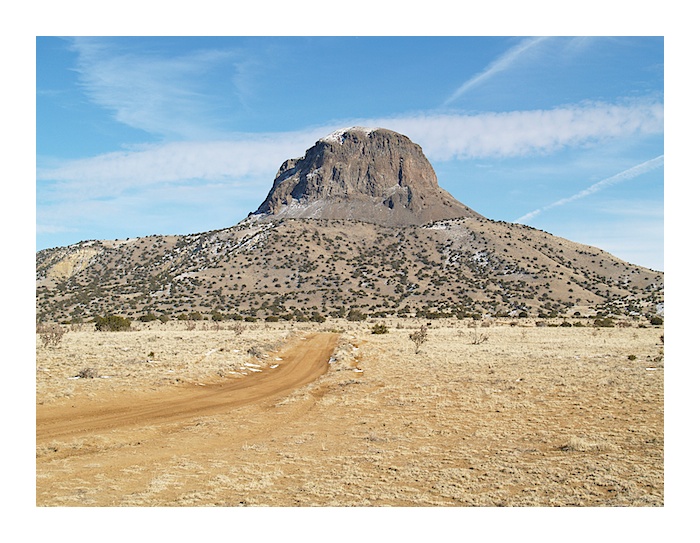
Cabezon Peak viewed from the west Photo L. Crumpler
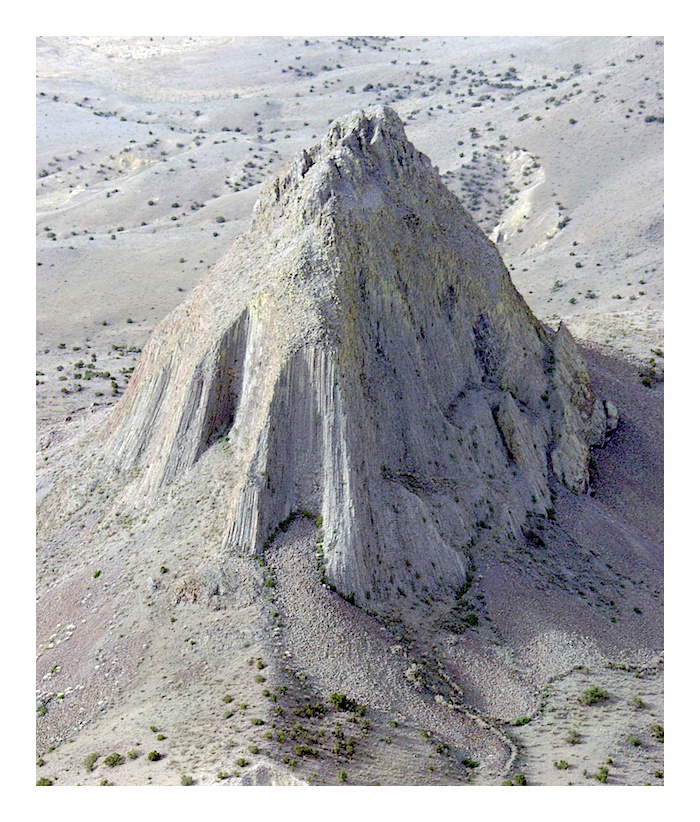
Cerro Alesna is an unusual volcanic neck on the west side of the Mount Taylor volcanic field. Unlike most of the dark and craggy necks in the Rio Puerco valley, Cerro Alesna has huge sweeping massive columns. It consists of an unusual type of volcanic rock, trachyte, benmoreite, or possibly mugearite, rather than the basalt and scoriaceous breccias of the volcanic necks throughout the Rio Puerco valley on the east side of the field. The presence of trachyte, benmoreite, and mugearite, rock types that erupt rather viscously and tend to form large lava domes on Mesa Chivato, makes the Mount Taylor volcanic field really unique and rather odd on the North American continent. Photo L. Crumpler
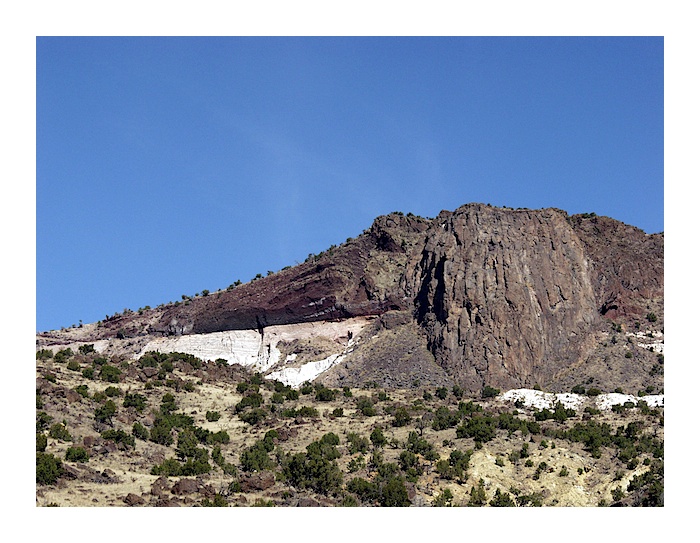
East Grants Ridge is a naturally half-sectioned scoria cone exposed in Lobo Canyon just north and outside of Grants, New Mexico. The cone and its dark scoria sit on top of brilliant white ignimbrites from a nearby earlier rhyolite dome, making it esier to see. The massive basaltic "plug" actually narrows down to a small dike only a meter or two wide at the base of the cliff shown here. Photo L. Crumpler
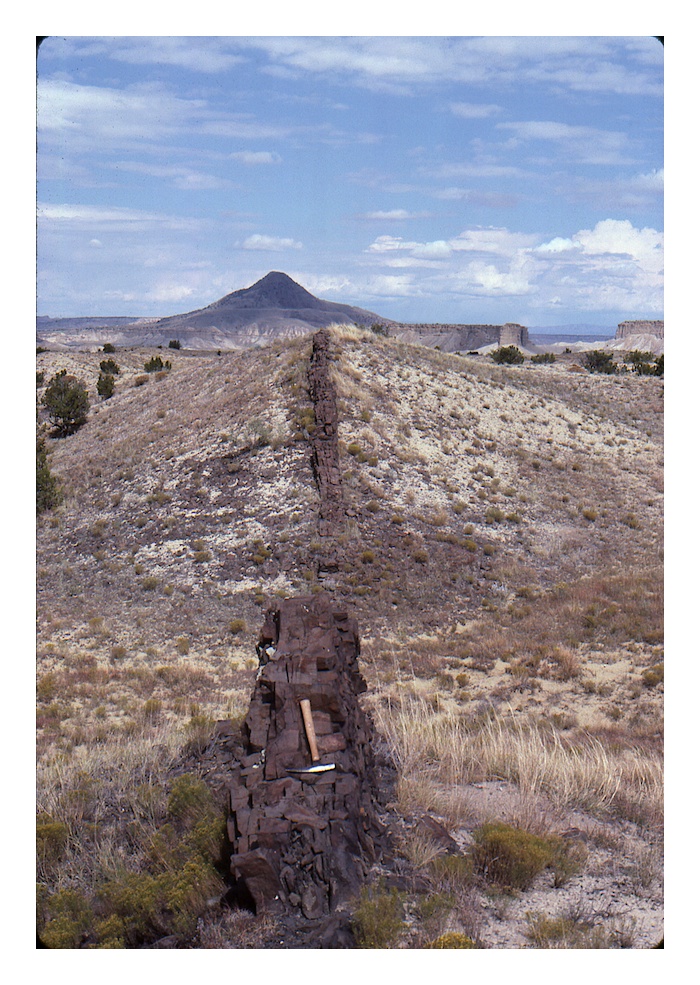
Basaltic dike exposed in the Mesa Verde Group shales of the Rio Puerco valley. Photo L. Crumpler
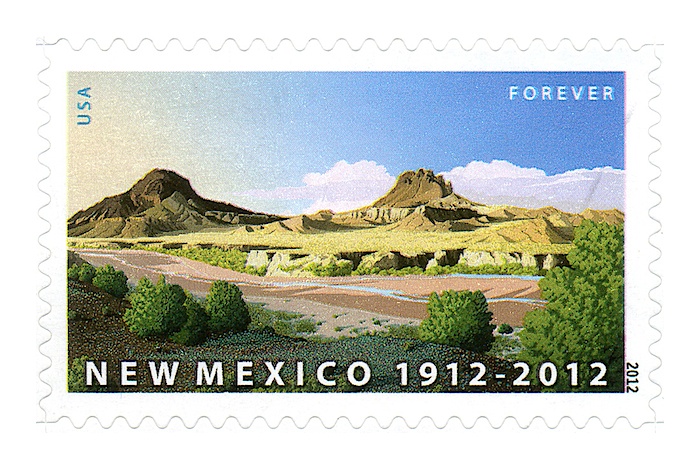
The New Mexico Centennial Stamp (Cerro Santa Clara and Cerro Guadalupe volcanic necks) Contrary to the official description, Cabezon Peak is no where visible in this scene! The original painting is a serigraph by silk screen artist Doug West.
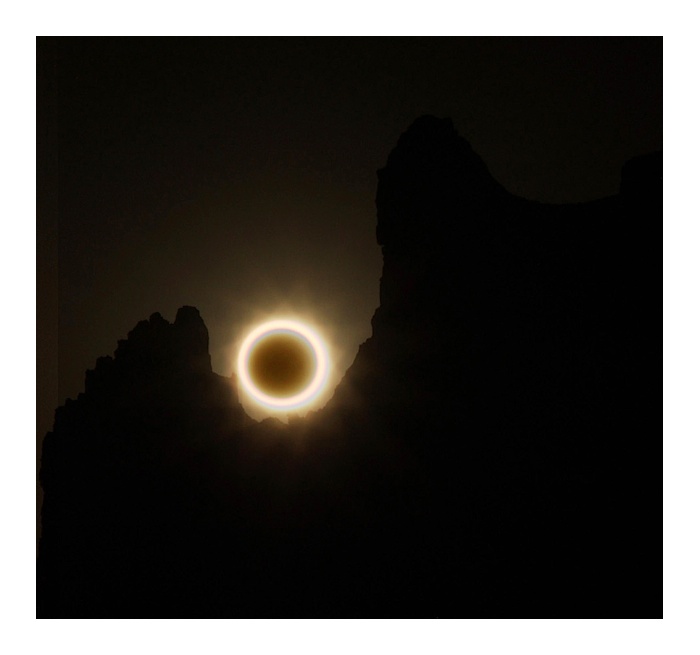
Annular Eclipse, May 20, 2012 as seen through peaks on the flank of Cerro Guadalupe Photo L. Crumpler
View west toward Boca Oso at the north end of Mesa Chivato. Boca Oso is the "plug" associated with the scoria cone nearly eroded away and forming the adjacent cliffs on the edge of Mesa Chivato. Rio Puerco in the middle ground. Remains of the adobe walls from settlements established in the early 20th century are common throughout the valley. Photo, L. Crumpler
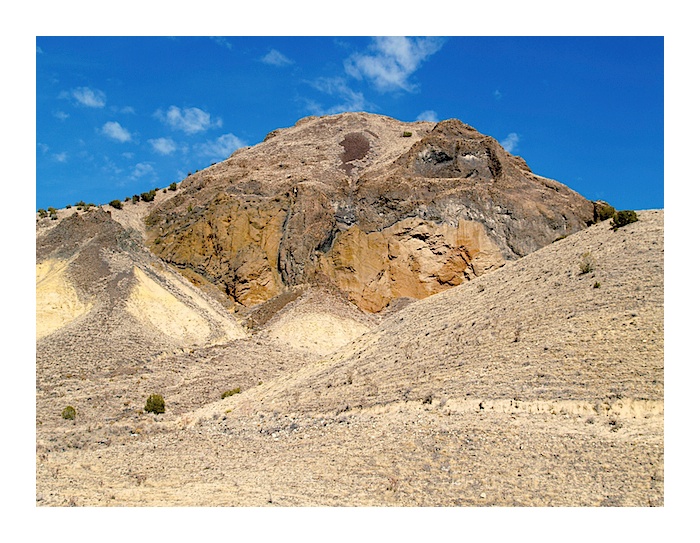
Cerro de Santa Clara (the volcanic neck on the left in the State Centennial stamp above) is a classic exposure. Here one can see a feeding basaltic dike approximately 3 to 4 meters wide cutting vertically through tuff breccias probably deposited in a depression during initial explosive opening phases of the volcanic center. Above these are dark basalt lavas that no doubt subsequently filled in the depression. This view is directed north. Photo L. Crumpler
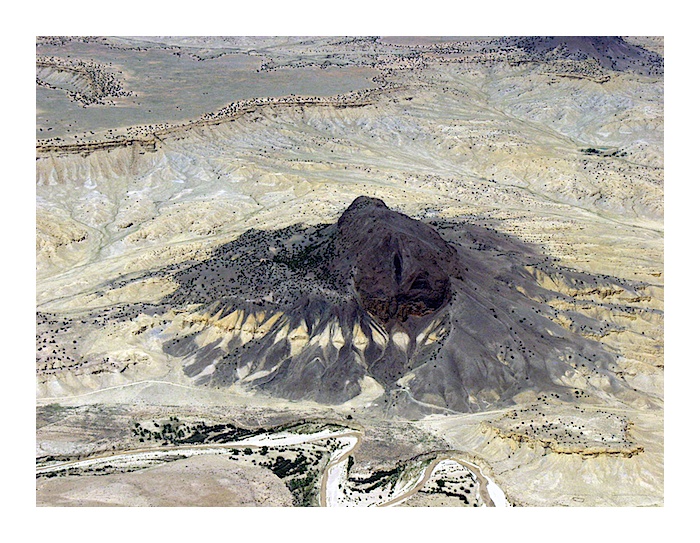
This is an aerial view of essentially the same scene as the photo above. Notice that the volcanic center originally developed without disturbing the pre-existing Cretaceous sediments of the Mesa Verde Group. The Rio Puerco snakes its way past at the bottom of the image. Photo L. Crumpler
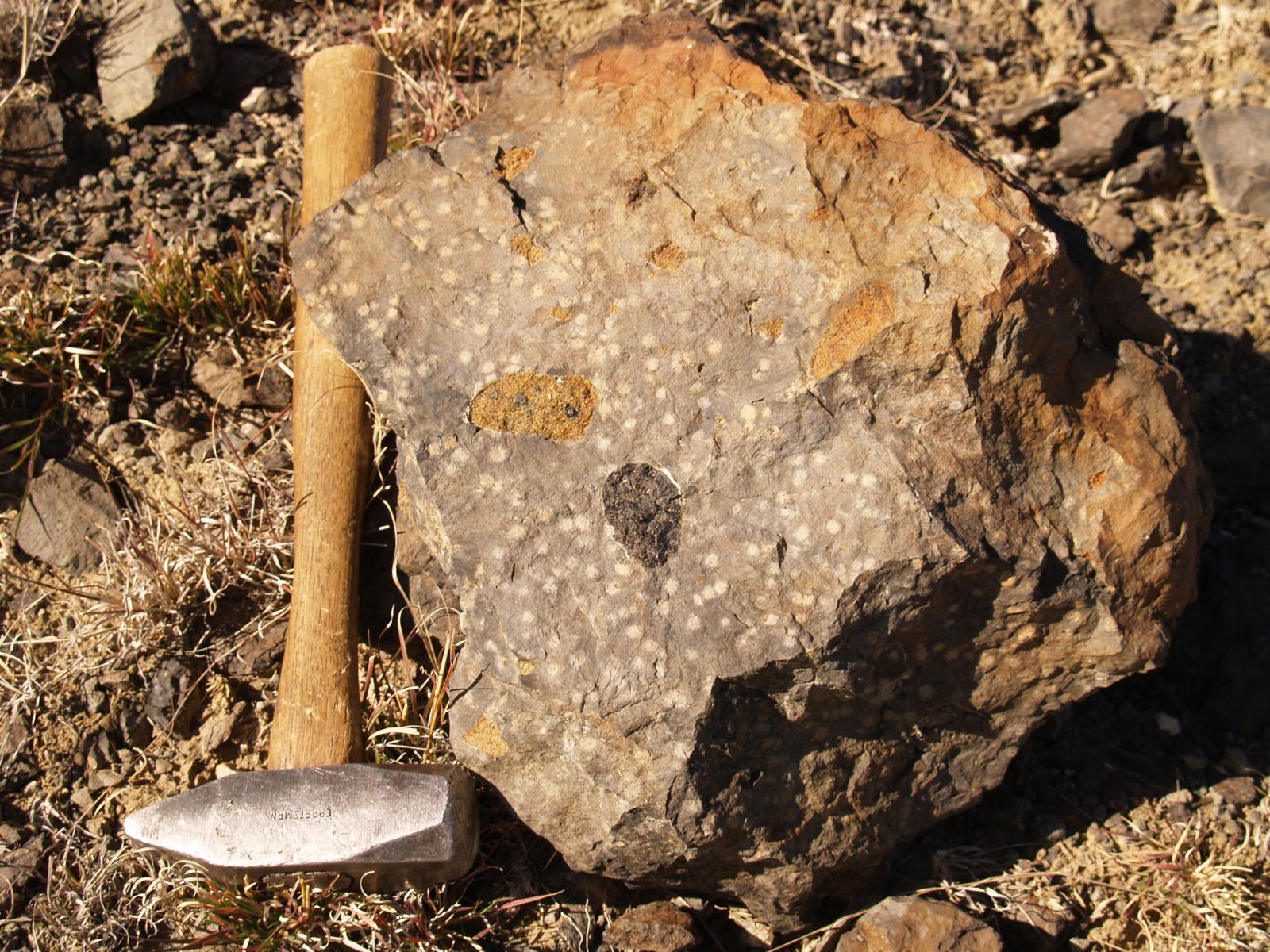
Mantle xenoliths are common in many of the volcanic necks of the Rio Puerco as illustrated by these two, a pyroxenite and a lherzolite, in a block of alkali basalt on the flank of Cerro Guadalupe volcanic neck. The origin of the spotting is unknowm. It is a surface phenomena, not phenocrysts, and is common in basalts throughout the Mount Taylor field and surroundings.
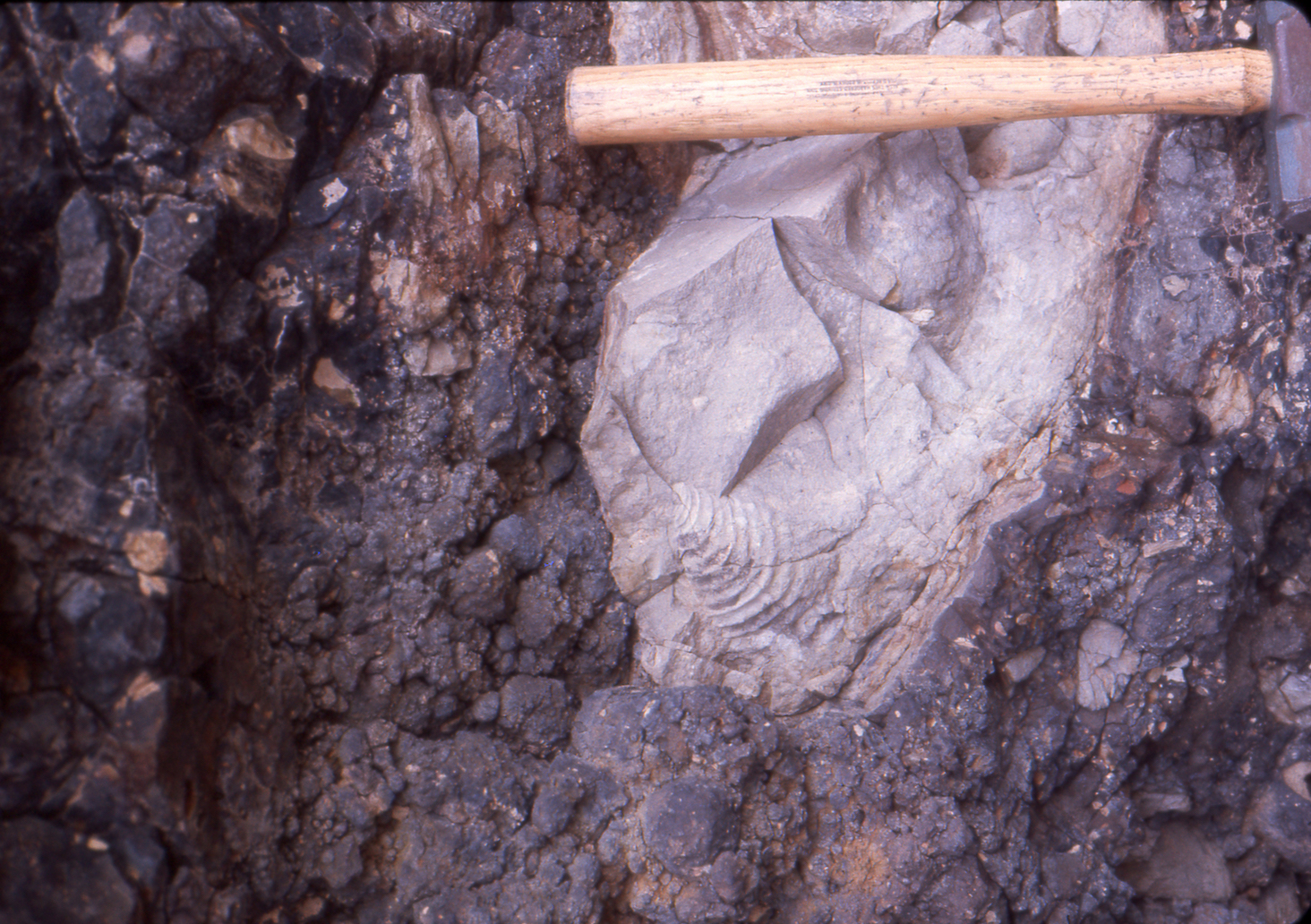
A variety of upper crustal materials are frequently embedded within the basalt and the vent berccias exposed within many of the volcanic necks. Here a fossil shell from the Permian limestone that exists within the upper 1000 m or so has been included within the breccias at Cerro Negro near Seboyeta.
References
Basset, W. A., Kerr, P. F., Schaeffer, O. A., and Stoenner, R. W., 1963, Potassium-argon ages of volcanic rocks near Grants, New Mexico: geological Society of America Bulletin, v. 74, p. 221-225.
Brown, W.T., 1969, Igneous geology of the Puerco necks [M.S. thesis]: University of New Mexico, 89 pp.
Crumpler, L. S., Natural Scoria Cone Half-Section, East Grants Ridge: a test of basalt pyroclastic eruption models: New Mexico Geological Society, Field Conference, Guidebook 54, 155-164, 2003.
Hallett, R. B., Kyle, P.R., McIntosh, W.C., 1997. Paleomagnetic and 40Ar/39Ar age constraints on the chronologic evolution of the Rio Puerco volcanic necks and Mesa Prieta, West-Central New Mexico: Implications for transition zone magmatism. Geological Society of America Bulletin, v.109, p. 95-106.
Hallett, R. B., Long, P.E., Lorenz, J., and Bjornstad, B., 1999, Geology and thermal history of the Pliocene Cerro Negro volcanic neck and adjacent Cretaceous sedimentary rocks, west-central New Mexico: New Mexico Geological Society 50th Field Conference Guidebook, p. 235-245.
Hallett, R. B., 1992, Volcanic geology of the Rio Puerco Necks: New Mexico Geological Society 43rd Field Conference Guidebook, San Juan Basin IV, p. 135-144.
Johnson, D. W., 1907, Volcanic necks of the Mount Taylor region, New Mexico: Geological Society of America Bulletin, v. 18, p. 303-324.
Johnson, H. C., 1953, Geology of the East Grants Ridge, Valencia County, New Mexico: Unpublished M.S. thesis, University of New Mexico, 51p.
Keating, G. N., Valentine, G.A., 1998, Proximal stratigraphy and syn-eruptive faulting in Grants Ridge tuff, New Mexico: Journal of Volcanology and Geothermal Research, v. 81, p. 37-49.
Kerr, P. F., and Wilcox, J. T., 1963, Structure and volcanism, Grants Ridge area: New Mexico Bureau of Mines and Mineral Resources, Memoir 15, p. 205-213.
Kudo, A. M., 1972, Sr Isotopic-disequilibrium in lherzolites from the Puerco necks, New Mexico: Earth and Planetary Science Letters, v. 15, p. 291-295.
WoldeGabriel, G., Keating, G. N., and Valentine, G. A., 1999, Effects of shallow intrusion into pyroclastic deposits, Grants Ridge, New Mexico, USA: Journal of Volcanology and Geothermal Research, v. 92, p. 389-411.
View the Mt. Taylor Volcanic Necks in a larger map



